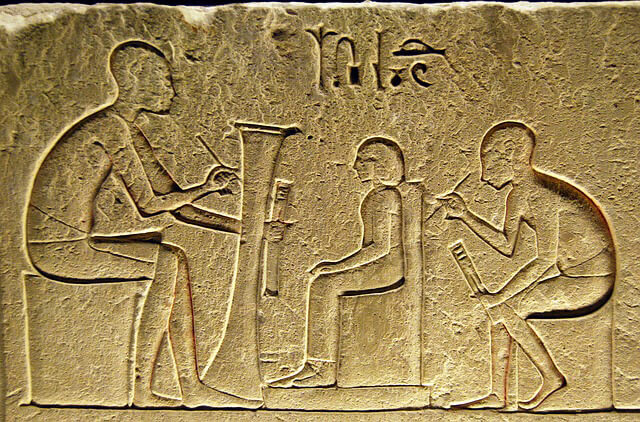Blog
Editing oral history transcripts

Oral histories can remain just that – oral – or they can be transcribed into an oral history transcript. For more information about recording and transcribing oral histories go to: Recording and transcribing oral histories
After an oral history has been recorded and transcribed into an accurate transcript, it needs to be edited. How much editing it needs depends on the intended use of the oral history transcript.
Editing an oral history transcript
If possible, the transcriptionist/editor of the oral history should go through the transcript with the author of the oral history, word by word, to :
- ensure it is an accurate representation of what they said.
- confirm that to their knowledge, the information in the transcript is correct.
- prompt the author to clarify any words or phrases that are not clear and edit in those clarifications.
- give them the opportunity to add to the transcript or to delete any parts they don’t wish to include.
- confirm whether the author wishes to be identified as the author of the oral history transcript
- confirm the potential use of the transcript; for example, will it be kept for family use only? Provided to the local oral history archives/museum? Published as an article, or with other oral histories in a book?
- confirm whether the author will remain the copyright owner of the transcript
- if appropriate, document an agreement/contract between the author of the oral history and the person transcribing/editing (or publishing) the oral history.
Copyright and oral histories
Initially, the copyright owner of an oral history is always the author, the person who is telling the story. The ethical viewpoint is that the copyright ownership of the transcript of that story should remain in the author’s name wherever possible.
However, sometimes the author wishes the copyright ownership to be held by another person (for example, a publisher) because this can be more practical from the author’s point of view. If the author of an oral history lives in another country, it may be more practical for the author to give the copyright ownership of their oral history to a person who lives in the country where it will be published. If an oral history is one of a collection of stories to be published in a book, the publisher/self-publisher may wish to own the copyright of that book and the authors of those oral histories may agree to this.
Importantly, if an author gives the copyright of their oral history to another person or a publisher or self-publisher, the person who is the copyright owner of that oral history should act responsibly and ethically in regard to how that story is published or republished, and keep the author informed of those uses.
For more information about the issues around the copyright ownership of oral histories, go to: Oral history interviews: ethical and legal issues, Who owns story?, and The Oral History Handbook (Australia).
Editing in consultation with the author
The author of an oral history should be given the opportunity to edit their own story, in consultation with the scribe/editor. This is because sometimes, seeing their comments in print may prompt the author to realise they’ve made a mistake about a name, date or place; or that they don’t wish to include certain comments or views, after all, because they may offend someone or even endanger themselves or another person.
After the first editing consultation with the author of the oral history, the editor needs to go back to the office and edit the oral history as requested or as decided in consultation with the author. If there have been a number of corrections to the original, the editor needs to take the edited draft back to the author again and repeat the editing-in-consultation process. The editor should consult with the author as many times as is necessary for the author to be satisfied that the transcript is correct and ready to be presented to the intended audience, whether that be family members, their community or, if their story is intended for publication, proofreaders or publishers.
What if that editing consultation isn’t possible?
Sometimes, it’s not possible to take the transcript back to the author of the oral history and edit it in consultation with them; they may live in another country and/or a very remote area so that it’s difficult or impossible to meet with them before using the transcript. They may even live in a country at war which makes it impossible to post the transcript to them to review.
If the oral history was recorded in those sort of circumstances, it’s likely the interviewer spoke to the author at the time they recorded the oral history and asked their permission to use their story for the intended purpose. Obviously, if they did not, the transcript should not be used.
When it’s impossible to edit the oral history transcript in consultation with the author, the editor should:
- fact-check any information that needs to be verified.
- include footnotes (or other methods of inserting notes) , or edit slightly, if the meaning of any comments is not clear.
- ‘edit out’ (delete) any comments that the editor feels the interviewee would probably have decided against including, had they been given the opportunity to read through the transcript themselves; e.g. for safety or personal privacy reasons, or because those comments may cause danger to the author or another person.
Relevant links
Editing oral history publications
Editing and proofreading in general
The above information is based on my own experiences recording, transcribing, editing and publishing oral histories.
Sally-Anne Watson Kane has recorded, scribed, edited and compiled several publications of oral histories, and has been producing transcripts and publications for 20 years. She established On Time Typing scribing and editing services in 2002 and continues to provide audio transcription, scribing and editing services across Australia.
Back To Blog

